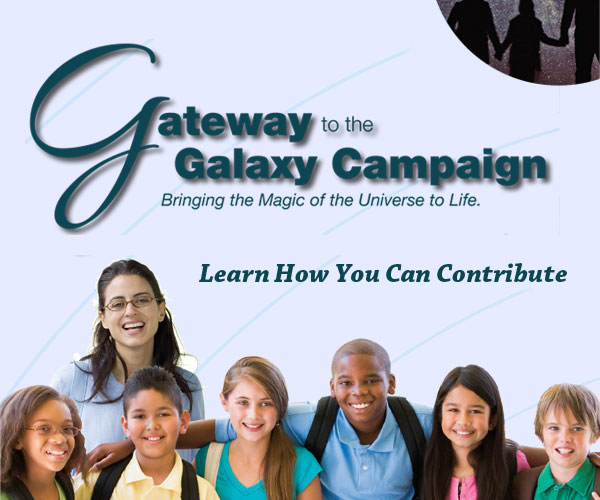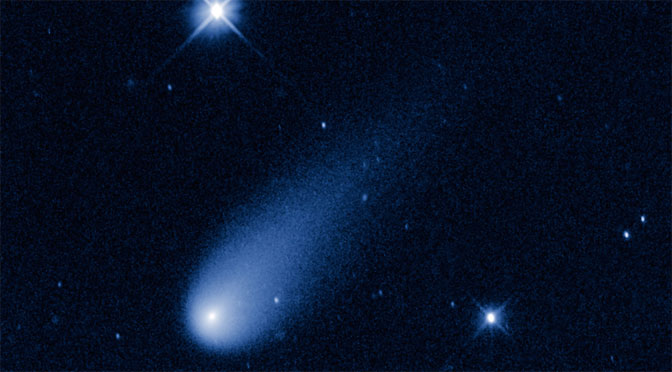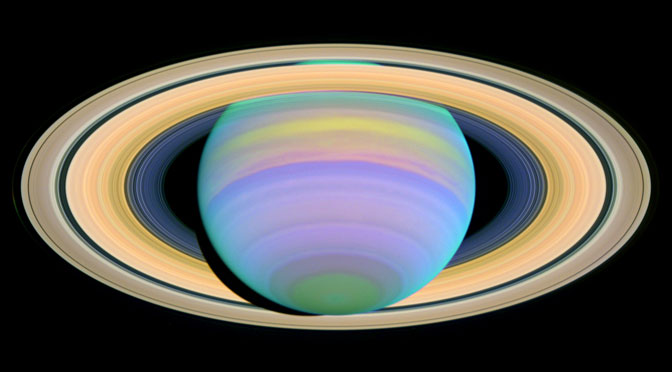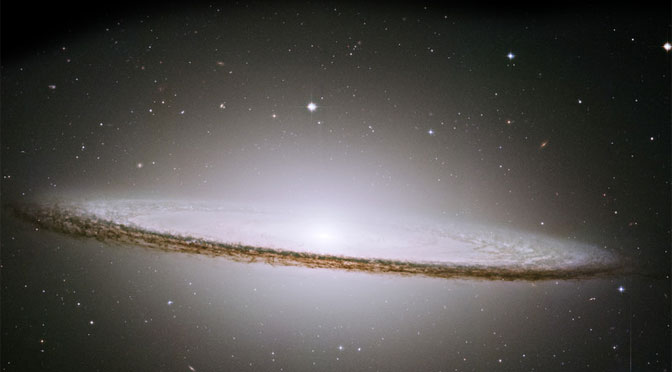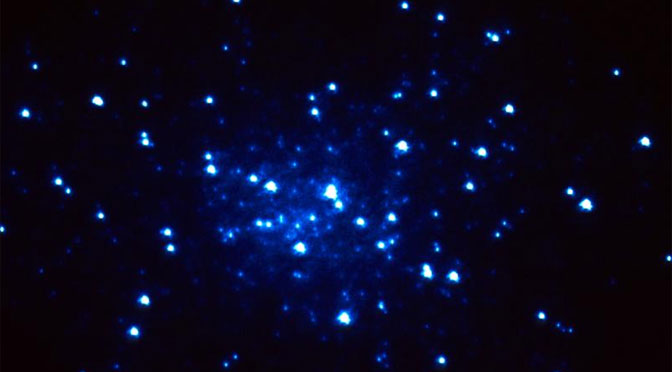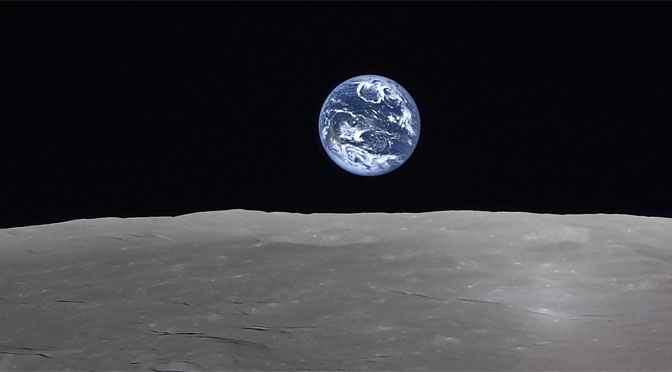by Erich Karkoschka
All posts by dianen2015
Planets of the Month: February 2019
by Erich Karkoschka
Planets of the Month: January 2019
by Erich Karkoschka
 |
TOTAL LUNAR ECLIPSE January 20: 8:34-11:51 pm, totality 9:41-10:44 pm. High in sky, near Castor and Pollux. Southern limb of moon gets very close to the center of the umbra at mid eclipse (10:12 pm). |
 |
Mars at magnitude 1, 60 degegrees high at dusk, sets after 11 pm. It is moving fast through the faint stars of Pisces. |
 |
Uranus and Neptune on both sides of Mars visible in binoculars. |
 |
Venus rises 4 am at brillant magnitude -4.5, high during dawn, naked eye visibility after sunrise. |
 |
Jupiter at magnitude -2 rises first at 5 am. Jupiter and Venus approach each other. Closest on 21st, 2.5 degrees separation, spectacular around 6 am! |
 |
Comet Wirtanen, magnitude 5 and dimming, moves fast from Lynx to Ursa Major, circumpolar. |
 |
The moon will be close to Mars on the 12th and close to Venus on the 31st. |
 |
Latest sunrise is January 8. |
Planets of the Month: December 2018
by Erich Karkoschka
 |
Saturn is still visible at dusk very low in the southwest until Dec 15. |
 |
Mars at magnitude 0 transits at 6pm and sets at midnight. It is moving fast through Aquarius. |
 |
Neptune is easy to find on Dec 7 when it is only 15 arc-minutes from Mars. |
 |
Uranus transits at 9pm 68 degrees high in Pisces. |
 |
Venus is magnitude -4.9, the brightest possible, high during dawn. |
 |
Mercury is visible well below Venus from Dec 4 to Jan 4. |
 |
Jupiter joins Mercury starting Dec 9 first below Mercury. On Dec 21, the pair is only 1 degree apart. Afterwards, Jupiter will be higher than Mercury by 1 degree per day. |
 |
The moon will be first visible on Dec 8 as a very thin crescent next to Saturn. On Dec 14 it shines below Mars. |
 |
The Geminids meteors will be very active on Dec 13 an 14. |
 |
Winter solstice occurs on Dec 21. The length of the day stays near 10 hours all month, but sunrise and sunset both get delayed by about a quarter of an hour during December. |
Expanding Science Education for Youth & Famlies
Member Benefits
What we have to Offer:
Monthly Member Meetings
The first Friday of each month the members of TAAA meet at the auditorium of the Steward Observatory on the campus of the University of Arizona. We have wide range of programs during the year. We have presentations from members and member groups, seasonal observing tips, and monthly planet reports. Being at the center of the nation’s astronomy industry, and in proximity of so much astronomy talent, TAAA host speakers from all over the discipline often to share cutting edge work in the field.
Volunteering
TAAA offers opportunities for its members to become active contributors to STEM education. We actively offer education to our own members and encourage those members to inspire students and the community by sharing their knowledge of the sky during events we host throughout the year.
Special Interest Groups
Sub-groups formed to study areas of special interest.
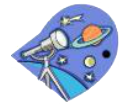
Holds monthly meetings on topics of interest to the budding astronomer and the seasoned veteran. This multifunctional group presents a basic astronomy course; sponsors workshops and guided observing programs.

This multi-faceted group reaches out to the public in many ways to share the awesomeness of our universe.
Members meet monthly to share their images and discuss astro imaging, hardware & software, and the issues that may arise.
Dark Sites
Access to each of our two dark sites – one to the west of the Tucson Mountains and one south-southeast of Tucson in Pearce, AZ – available to members and their guests.
Equipment Lending Program
We have telescopes and accessories that members can borrow. This allows members to use telescopes at the dark sites, or to test the various equipment types before buying. The available TELESCOPES link.
TAAA Forum
Participate in the discussion forum to share topical issues in the Astronomy world. Members share observations, astronomy related stories, astro-photos, and ideas on equipment.
Affiliation with National Organizations
Opportunity to meet and associate with astronomy professionals and share your astronomy knowledge with others.
Members Bulletin
Members receive a monthly Desert Skies Bulletin, listing current activities and astronomy related articles of interest. Log into Member Planet (through Members Only Portal) to view the latest Bulletin. Members will also receive an email link for each new Bulletin.
Bulletin (Monthly) – Monthly Bulletins – historic list
Member Apparel – with TAAA Logo
Members have access to apparel from shirts to hats, shorts to active wear all sporting the TAAA logo in the Apparel Catalog.
Magazine Discounts
Periodically, Members will get club discount on Sky & Telescope and Astronomy magazine subscriptions.

Access to Club Library
Our club library contains many books and CD’s that are available to our members. [Read More]
Specialty Workshops
Guided projects to build astronomy equipment. Our current projects include building white light solar filters and lamps which help preserve night vision. The upcoming Classes are listed at this LINK.
Guided Observing Programs
Include observing constellations, the sun, the moon, our solar system, and double stars. We even have a family observing program.
Link to your Website
We will provide a link from our website to yours.
Now that you have seen what we are about, you might want to consider joining with us. If you join with us, you will receive a New Member Packet which includes the following:
- Welcome Letter
- TAAA Privacy Policy
- Star party Etiquette
- Getting Started in Astronomy
- Astronomy for Beginners
- TAAA Lending Programs
- Helpful Astronomy Product Reviews
Invitations to member social events
TAAA holds social events at the end of each in person member meeting, at our dark sites during the year, and a celebratory year end Holiday Party where you can mingle with like minded, curious members.
…and we provide mentoring where needed.
Services We Provide
Community Star Parties
- Star Parties for requesting communities [ See Details]
Public Star Parties – Star Parties open to the public
- Catalina State Park
- Oracle State Park
- Parks and Recreation
Member Star Parties – Star Parties for members and invited guests
- Monthly and Bi-Monthly our Chiricahua and TIMPA dark sites
Tucson Stargazing Adventures
- Special Occasions
- Conventions
- Resorts
Astronomy Extravaganzas
- Astronomy Festival
- Grand Canyon Star Party
Other Non-Star Party Events
- Tucson Festival of Books
Mentoring Youth/Adults
- Boy Scouts
- Boys/Girls Clubs
- Star Party Volunteers
- How to observe – Observing Clubs
- Astronomy CAMP for teens
Tools We Use
- Knowledgeable Volunteers
- Excellent Educational Materials
- NSN Tool Kits
- Quality Equipment – Binoculars, Telescopes and Accessories
About TAAA
Our Purpose
The Association shall be an educational, service, scientific, and technical organization devoted to the study of, and promotion of interest in, Astronomy and its related allied sciences.
We are a friendly group of individuals like you with a common interest in astronomy.
Special Interest Groups
Sub-groups formed to study areas of special interest:
 Holds monthly meetings on topics of interest to the budding astronomer as well as the seasoned veteran. This multifunctional group presents a basic astronomy course; sponsors workshops and guided observing programs.
Holds monthly meetings on topics of interest to the budding astronomer as well as the seasoned veteran. This multifunctional group presents a basic astronomy course; sponsors workshops and guided observing programs.

This multi-faceted group reaches out to the public in many ways to share the awesomeness of our universe.
Members meet monthly to share their images and discuss astro imaging, hardware & software and the issues that may arise.
TAAA Publications
Monthly Bulletin: Members receive a monthly bulletin listing the events of the following month. The current Bulletin is available only to members.
Desert Skies Newsletter: A journal published quarterly that includes articles of interest on various astronomy topics.
What We Provide to Members:
The opportunity to learn and understand the magnificence and grandeur of the universe There are various services and programs available only to our members . Join us!
What We Provide to Tucson:
Brief glimpses of the awesomeness of the universe and the opportunity to enjoy the allure and elegance of the night sky through star parties and hands on activities. You’re invited!
A Brief History of TAAA
Founded in 1954, we quickly grew to a group of 50 people known as the Tucson Amateur Astronomers (TAA). Activities then included tracking artificial satellites from a Moon Watch station at the U of A. The Moon Watch Program, coordinated by the Smithsonian Institution, helped the early US space-flight engineers perfect their science. Our Moon Watch station was recognized as one of the top three stations in the U.S. These activities led to a name change and we became the Tucson Astronomical and Astronautical Association (TAAA), a real tongue twister.
As the Moon Watch Program came to an end in the early 70s, our emphasis moved away from astronautics and focused on astronomy, but it wasn’t until 1978 that we became the Tucson Amateur Astronomy Association. [Read More About Our History]
Non-Profit Status
In 1987 we were incorporated as a 501c3 non-profit organization with the dedicated purpose of studying and promoting astronomy and its allied sciences.
Please help us further our goals.
Local Astronomy
Desert skies are ideal for astronomy and the Tucson Desert sky is no exception. Many seek out Tucson as the place to be. Why? Because of our night sky, but also because of all of the astronomy and scientific organizations based here. The Tucson Amateur Astronomy Association is the premier amateur astronomy group by virtue of our close ties to many of the astronomy and scientific organizations as well as our educational opportunities and outreach events.
In addition to TAAA events, here are some of the things that are happening in and around Tucson:
Kitt Peak National Observatory
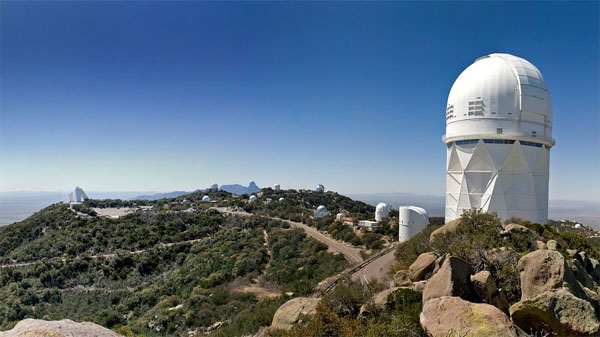
Kitt Peak supports the most diverse collection of astronomical observatories on Earth for nighttime optical and infrared astronomy and daytime study of the Sun. Whether you wish to visit during the day to catch a guided tour, learn the constellations and view through a telescope at night, or even reserve a telescope all to yourself, there is something for you. Daytime and evening programs, some very special events, programs for schools and youth groups, tours for organized groups, exhibits, and facilities. Visit the Kitt Peak website for more information.
Flandrau Science Center
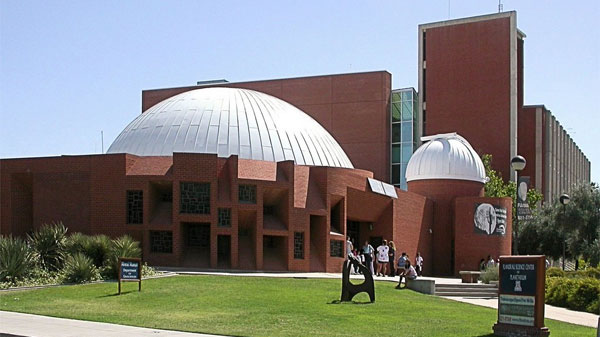
The Flandrau Science Center & Planetarium explores our universe from earth to space and everything in-between, bringing science alive for young and life-long learners alike. Changing exhibits through the year focus on biology, energy, optics and more, weaving in ground-breaking UA research and revealing the world of science careers for budding scientists. Flandrau’s Observatory is open to the public at no charge each week Thursday through Saturday from 7:00 pm to 10:00 pm.
Steward Observatory
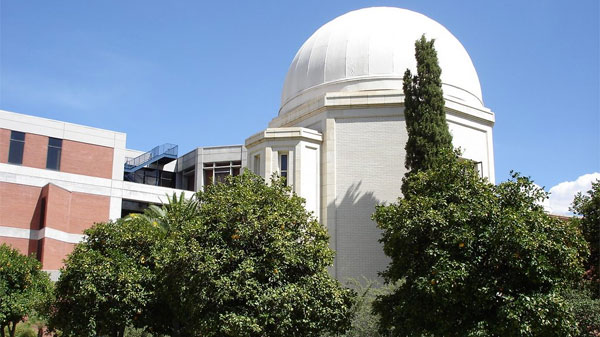
Since September 1922, Steward Observatory has been hosting public evening lectures in astronomy. The lectures begin at 7:30 p.m. and are held in Room N210 of Steward Observatory. Following all Monday evening talks, the Raymond E. White, Jr. Reflector in the historic Steward Observatory dome will be open for public viewing of the night sky (weather permitting). All of the lectures and the use of the telescope are free of charge and open to the general public. Visit the Steward Observatory website for more information.
Mt. Lemon Sky Center
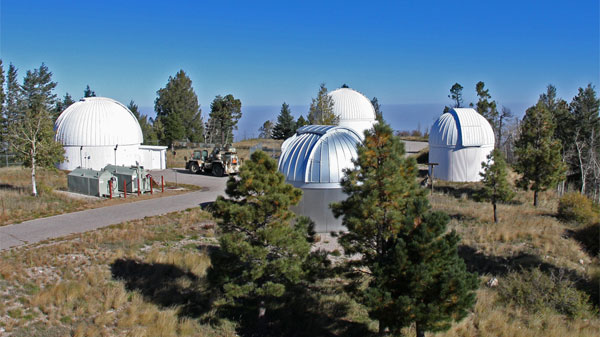
The SkyNights StarGazing Program is open to the public most nights of the year using the Southwest’s largest dedicated public telescope! This program is a unique awe-inspiring opportunity that lets you peer beyond the blue horizons of our southwestern skies and explore the astronomical wonders of the Universe.
Fred Lawrence Whipple Observatory
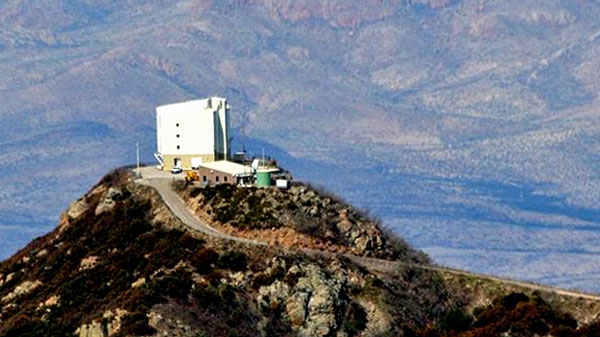
The Visitors Center features displays and exhibits on astronomy and astrophysics, natural science, and cultural history. Located at the base of Mt. Hopkins in the Santa Rita Mountains, just within the boundary of the Coronado National Forest. For more information, visit the Whipple Observatory website.
National Solar Observatory
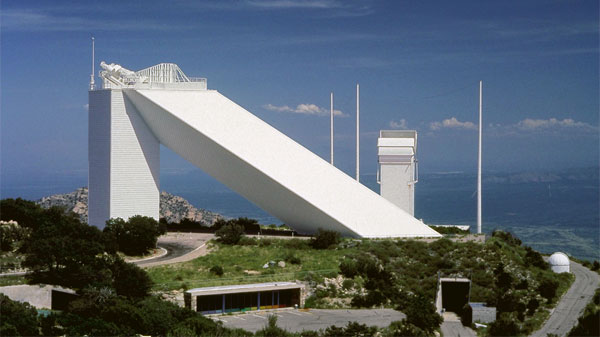
The National Solar Observatory at Sacramento Peak welcomes visitors during the daytime. The Observatory offers various kinds of tours.
Mt. Bigelow Astronomy Camp
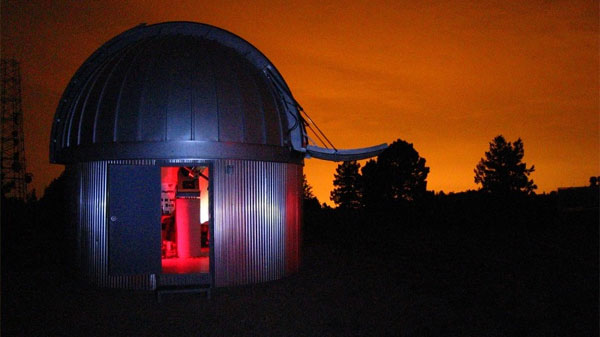
An opportunity for both young and old to experience the universe in a new and exciting way. Teenage students gain a cosmic perspective of the earth and themselves. Visit the Mt Bigelow Astronomy Camp website for more information.
Richard F Caris Mirror Lab
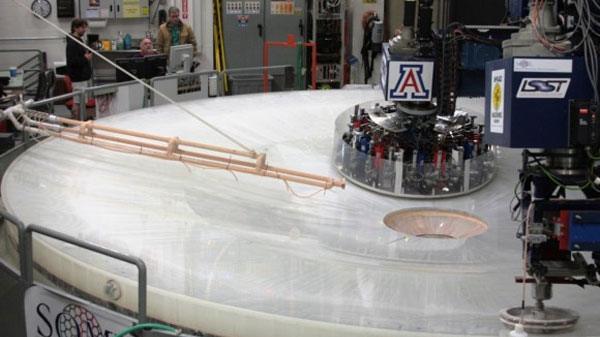
The Mirror Lab offers a 90 minute tour which provides a unique opportunity to learn how innovative engineering and optical technology melds with manufacturing techniques to produce the largest and most advanced giant (8.4 meters / 27 ft) telescope mirrors in the world on the University of Arizona campus.
Sample Post
Lorem ipsum dolor sit amet, consectetur adipiscing elit. Proin feugiat purus non volutpat sodales. Quisque ullamcorper venenatis elementum. Proin malesuada urna non metus malesuada, ut placerat purus tincidunt. Morbi accumsan leo et risus aliquam euismod. Sed sit amet urna sed leo molestie accumsan id et augue. Mauris erat magna, commodo nec felis eget, accumsan tempor nulla. Phasellus dui lorem, varius sed condimentum id, varius sed ex. Maecenas purus neque, auctor et risus eget, feugiat sollicitudin quam. Proin mi ante, placerat in consectetur id, vehicula vehicula ante. In tortor risus, luctus vitae diam ut, commodo lacinia orci.
Etiam ultricies mi risus, id mollis magna gravida vel. Morbi tincidunt varius euismod. Suspendisse potenti. Donec fringilla mattis velit sit amet hendrerit. Praesent sed ante mollis, hendrerit massa sit amet, blandit felis. Cras ornare volutpat lacus, at dignissim tellus molestie quis. Mauris porttitor id dui at rutrum. Morbi elementum faucibus egestas. Duis mattis quam urna, quis dictum nisi interdum a. Quisque ac leo ut ante vulputate sagittis eu a nibh. Curabitur turpis nibh, tincidunt eget rutrum sit amet, vulputate et arcu. Vestibulum non condimentum augue. Duis condimentum eu eros eget lobortis. Ut non vehicula nibh, sit amet faucibus ipsum. Quisque a nulla non velit efficitur venenatis eget nec lacus. Nulla facilisis dui ornare maximus blandit.
Praesent eu justo lacinia, aliquam neque ac, cursus sapien. Maecenas in tincidunt sem. Integer volutpat orci tristique nunc pretium, id vehicula massa sollicitudin. Donec sit amet metus pulvinar, vehicula felis ut, faucibus nibh. Aliquam luctus erat quis bibendum blandit. Donec venenatis massa et ligula laoreet tincidunt. Mauris dignissim, velit at tristique ultricies, augue est imperdiet ante, sed laoreet dolor nibh auctor sem. Proin nibh ante, sagittis ac euismod non, condimentum convallis nunc. Duis quis ante in tellus lacinia ultricies ut in sapien. Pellentesque et nunc dapibus, vulputate lorem eget, aliquet mi. Fusce bibendum, magna dapibus tincidunt pretium, ante dolor ornare nisl, ac sodales nunc orci ut felis. Praesent sit amet neque ultrices magna aliquet dapibus at lacinia ex. Praesent nec semper nulla, fringilla vestibulum ex. Morbi in fermentum dolor. Etiam tellus quam, lobortis at orci eu, varius suscipit sem. Aliquam quis sapien eget nisi aliquam convallis nec at velit.
Nullam sagittis mollis eleifend. Phasellus et ullamcorper purus. Aliquam non ex non lorem pretium venenatis. Vivamus rhoncus consectetur velit quis condimentum. In vulputate et orci eu interdum. Fusce non diam a nulla auctor cursus sit amet ut sem. Maecenas finibus, augue et dignissim aliquet, ligula urna congue nisi, a ultricies enim libero facilisis metus. In hac habitasse platea dictumst. Nunc metus eros, imperdiet a nisl eu, iaculis efficitur mauris.
Vestibulum ante ipsum primis in faucibus orci luctus et ultrices posuere cubilia Curae; In condimentum fringilla tincidunt. Donec elementum laoreet velit ut congue. Nunc bibendum massa ac velit fermentum malesuada. Pellentesque congue turpis ac eros fermentum, a faucibus tellus vestibulum. Aliquam ut est in nulla tempus porta. Donec tincidunt vulputate ornare. Quisque et nibh faucibus, molestie orci vel, malesuada ex.


